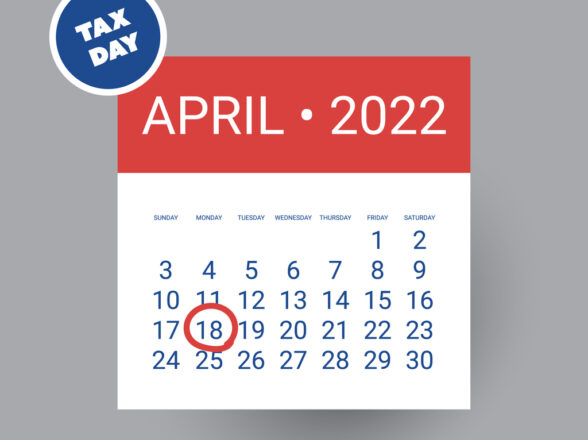Blog
5 Costly Estate Planning Mistakes We See All the Time

Creating your estate plan may be important, but you need to avoid common pitfalls and mistakes while you are at it. Otherwise, you will spend time creating a plan riddled with errors that cause your loved ones unnecessary headaches and stress in the future. Being conversant with common estate planning mistakes will help you take necessary precautions to avoid them.
When creating your first-ever estate plan or updating an existing one, watching out for the pitfalls allows you to write a flawless plan. Ultimately, that ensures that your estate plan accomplishes what you envision while safeguarding your legacy. On the other hand, understand that estate plans are not just for the rich and famous.
Most individuals have something valuable. That can be a home, cash in a bank account, a car, among other things. An estate plan allows you to maximize the actual value of the estate you will pass on to your beneficiaries and heirs. The implication is that making informed decisions regarding handling your assets while you are still alive is possible through an estate plan.
Additionally, major life events like death, birth, divorce, or marriage, as well as ever-changing tax laws, are some of the reasons why reviewing your estate plan often may be necessary. On the minimum, revisiting or dusting off your estate plan every three to five years is advisable if you want to align it with current laws.
Here are the top estate planning mistakes you should avoid if you want to protect your loved ones from unforeseeable issues in the future.
1. Potent Portability Issues: A Second Spouse Benefiting from The Unused Portion of The Exclusion Amount
First, understand that portability rules allow a surviving spouse to take advantage of any unused portion of their spouse’s applicable exclusion amount. The only thing is that the federal estate tax return should be filed to preserve the deceased spouse’s unused applicable exclusion amount within nine months of their passing. That period increases to 15 months if an extension is granted.
Most estate plans included credit shelter trusts (CSTs) before portability and are sometimes referred to as exemption, bypass, or family trusts. Typically, CSTs are funded with assets having a value equal to the applicable exclusion amount ($11.58 million in 2020) of the first spouse to die.
If the applicable exclusion amount of the first spouse to die is properly allocated, assets placed in a CST can be eliminated from the surviving spouse’s estate. Note that couples were required to use a CST to preserve the first spouse’s exclusion to die. That was before 2011 and is no longer necessary, thanks to portability.
As much as that is the case, flexibility may be limited by the non-portability of the generation-skipping transfer (GST) tax exemption. Also, some state estate tax exemptions still limit the period in which the exclusion may be allowed. There may be other reasons why using a CST may be necessary.
However, reviewing your estate planning documents with your attorney will help you determine whether the use of portability or allowing more flexibility in the funding of a CST is appropriate. Your present situation will be the determinant in this case.
2. Beneficiary Blunders
Failure to review beneficiaries from time to time or not naming a contingent beneficiary on insurance policies and retirement accounts is a recipe for future issues. Understand that when you fail to pick a contingent, the default will most likely be your estate, which may be subject to delays, probate, creditors, among other things
On an IRA, no contingent beneficiary means extended distribution, which is a valuable tax break. For IRAs inherited from original owners that died on or after January 1, 2020, the SECURE Act requires most beneficiaries to withdraw assets from an inherited IRA or 401(k) plan within 10 years following the death of the account holder. Without an identifiable beneficiary, the ability to leave the assets growing tax-deferred in the IRA vanish.
Since an estate has no life expectancy, you should not expect a stretch to minimize taxes and potentially receive considerably more income over your beneficiary’s lifetime. Additionally, if you forget to change an ex-spouse on an IRA, that may have disastrous consequences for your new spouse or family. Understand that your new spouse becomes your beneficiary the day you settle with them in marriage.
Unfortunately, that is not the case with an IRA. Your current spouse must agree to you naming someone else as the beneficiary of your retirement plan if you do not want them to assume the benefits. Also, your prenuptial agreement will not apply here since a fiancée is not yet a spouse, and your current soul mate can waive those rights.
3. Fiduciary Follies: Naming The Wrong Executor Or Trustee
The term fiduciary refers to someone appointed to take legal control over assets for the benefit of another individual who is often the beneficiary. Acting in the best interest of the beneficiary is a fiduciary’s legal responsibility. Trustees and executors are the two types of fiduciaries that feature in estate plans.
Trustees are in charge of assets held within trusts, which may be set up during a person’s life or at death under the terms of a will. On the other hand, executors are appointed in a will and assume control of assets during the probate process. The executor’s task continues until when assets are ultimately distributed to the named beneficiaries.
The responsibilities of executors include filing any estate tax returns, collecting all the assets of the deceased, paying expenses, and paying final debts. Note that a trustee’s role may continue either until the trust is terminated or in perpetuity, while an executor’s role only lasts for a finite period. Generally, trustees and executors oversee tax filings, investments, and accounting during their tenure.
If your estate plan is outdated, the names of fiduciaries or successor fiduciaries therein may no longer be suited for the position. The reason is that a fiduciary named years earlier may now be elderly or even deceased. A professional like a CPA or attorney may also be named in this case. The problem is that their professional relationship with the beneficiary may have since ended.
It is also possible that the professional may no longer be practicing. You may also decide to name corporations assuming that they exist in perpetuity. Well, that is not the case since corporations merge or may be acquired by another enterprise. You may also discover that children who were too young to serve when the documents were created are now mature enough to assume the fiduciary role.
Indeed, fiduciaries are bound by particular standards of law. As much as that is the case, naming individuals you trust is critical. The level of financial knowledge, age, and maturity of the fiduciary you will opt for are the other things worth considering. You also need to understand that the people who were best fit for the task may have changed over the years, which means a review is necessary.
So, assessing those named as fiduciaries in your estate planning documents to determine whether you need to make some adjustments to these designations is paramount.
4. Lacking An Understanding of Estate Planning
Most individuals, including the wealthy and sophisticated, become passive in the presence of an estate planner. They rely on the latter to ensure that everything in their estate plan is what they need and is properly executed. When that is the case, you will find someone signing estate planning documents and saying to the attorney, “I don’t really know what I just signed.”
It is also interesting to discover that a high percentage of the estate plans attorneys prepare may not be fully implemented. That may happen because a client may lack an understanding of estate planning and their responsibilities going forward. In part, an estate planner’s job is to ensure that you understand the basics of how the plan works.
They should also ensure that you know your obligations regarding implementing and maintaining your estate plan, including how it will work for you and your beneficiaries. Exercising due diligence on your part to become conversant with these details is also advisable.
That suggests that you do not need to know the reason behind using certain language and all the legal angles, but understanding the fundamentals is not an option. So, that may imply insisting that the planner spare time to walk you through the estate plan and relating documents. You can consider making decisions after discussions with an estate planner.
At that point, you will fully understand the actions you are about to take about your estate plan.
5. Failing to Update Powers of Attorney
The powers of attorney should be included in every estate plan. Having two of these is advisable because one will take care of medical issues while the other will address financial matters. So, in case you are disabled, you will have access to necessary documentation before a will or the rest of your estate plan come into play.
The problem is that most people do not have either of these documents, and others have not updated the powers of attorney for a long time. The implication is that ensuring your will and estate plan are up-to-date is something you cannot afford to ignore.
Conclusion
Creating an estate plan is one of the most generous things you can do for your family and loved ones. While you are at it, ensure that your good intentions do not fall to the wayside by avoiding the mistakes above. Remember that most estate plans no longer meet their original intent due to a lack of routine updating and inattention.
Some of the reasons why many estate plans become outdated include children reaching adulthood, death, divorce, birth, and marriage. Changes to family and financial circumstances as well as adjustments in tax code and laws, further erode the effectiveness of an estate plan. So, in addition to avoiding the mistakes above, consider evolving your estate plan depending on your circumstances.


































































































